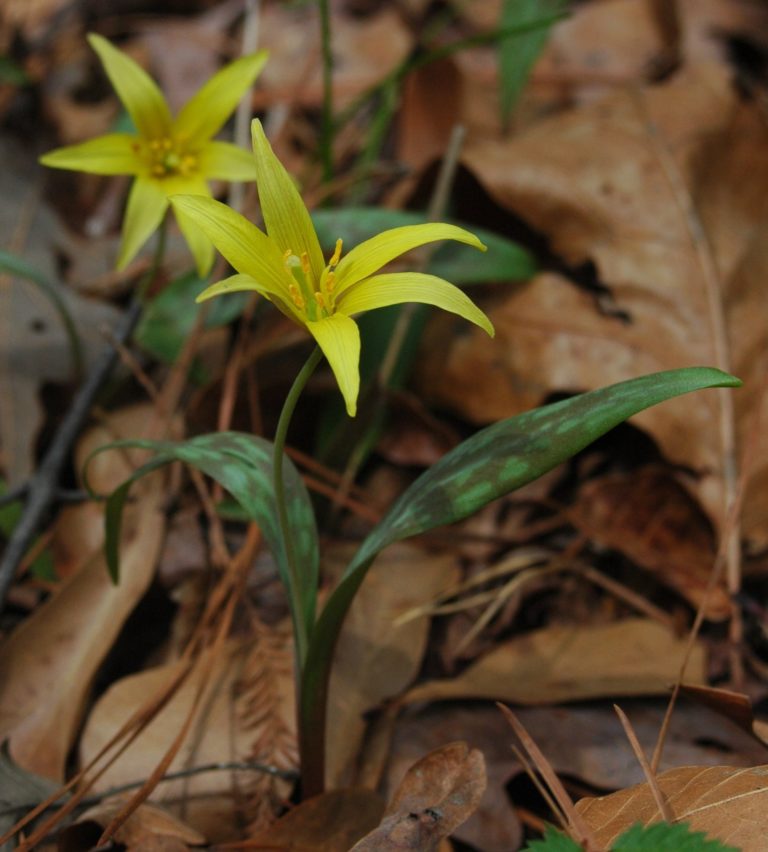Recognized by its paired, green-and-brown/maroon spotted leaves (like trout), the Trout Lily is sometimes called Dogtooth Violet for its white underground corm. Trout Lily is a lily, not a violet. It is a common spring ephemeral wildflower that grows in woodland colonies in Eastern North America, except for Florida. In North Carolina is is found more in piedmont and mountain counties than on the coastal plain. Trout Lily has no stem except for when it flowers and then a single, yellow, nodding, 6-petaled flower appears on the stem. Only plants with 2 basal leaves will produce a flower. Trout Lily attracts numerous bees and insects for its easily accessible nectar. It should thrive in deciduous forest habitat where it can receive sufficient sun in the early spring. Absolutely stunning as a ground cover when a colony is formed.
NURSERY HOURS
Wednesday: 10-4 Thursday: 10-6 Friday-Saturday: 10-4 Sunday: 12-4
Erythronium americanum

Key Info
Scientific Name: Erythronium americanum Ker Gawl.
Common Names: Trout Lily, Yellow Trout Lily, American Trout Lily, Eastern Trout Lily, Fawn Lily, Dogtooth Violet, Adder's Tongue, Yellow Adder's Tongue
Family Names: Liliaceeae
Moisture Requirement: Moist well drained
Leaf Retention: Deciduous
Flower Color: Yellow
Special Characteristics: Attracts pollinators, Interesting form, Spring ephemeral, Colony forming, Groundcover
Additional Info
Habit: Pair of mottled leaves form around a central stalk with solitary nodding flower.
Height: 6"
Spread: colony forming, individual plant 4"
Soil Conditions: Rich, moist, well drained soil, Acidic (pH<6.8)
Leaves: Two, 3-6", elliptic, maroon-mottled leaves grow from central root crown.
Flowers (or reproductive structures: A slightly taller stalk bears a solitary, nodding flower, yellow inside, bronzy outside. Petals and sepals are bent backwards exposing six brown stamens.
Fruit: small light green oval capsules. At maturity, these capsules divide into 3 parts to release their seeds.
Natural Distribution: Moist, deciduous woodlands & openings
USDA Hardiness Zone: 3 to 8
Pollination: attracts bees, pollinators and specialized bee-Andrena miner bee.
Wildlife Connections: Members of the genus Erythronium support the following specialized bee: Andrena (Leucandrena) erythronii.
Propagation: best to allow plant to divide and then dig up the extras in late summer.
